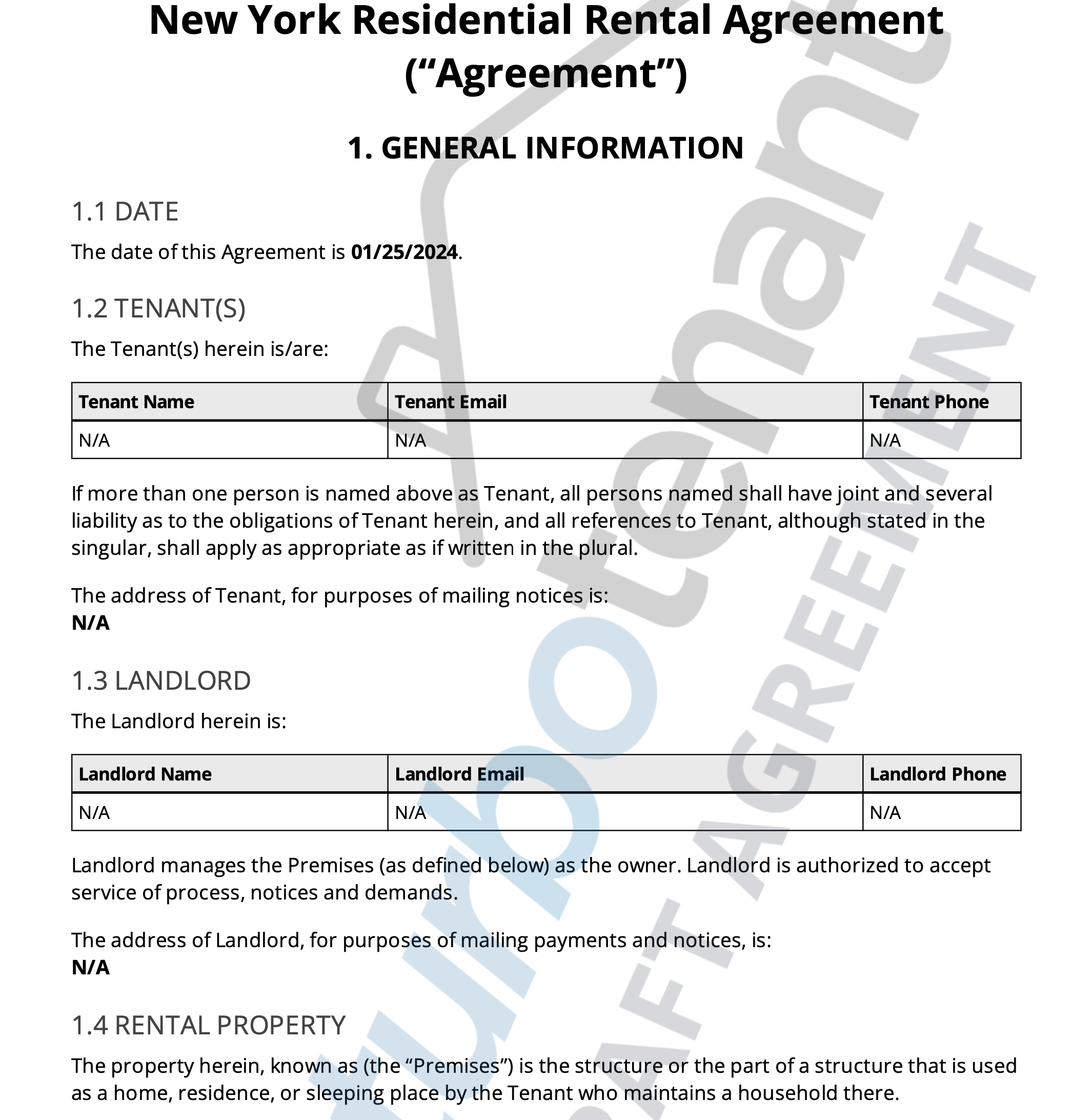Navigating the waters of lease agreements in New York and New York City can be complex, but with TurboTenant’s carefully structured lease agreements, landlords can sail smoothly, ensuring both legal compliance and tenant clarity.

For New York
Section 1: Tailoring to Your Property’s Needs
In the lease creation process with TurboTenant, this is where you detail the unique features of your New York State property. From the rent details to who’s on the lease, this section ensures your lease agreement is specific to your property’s requirements.
Additional Provisions
Here, you can add property-specific rules or clauses. It’s highly recommended to have a lawyer review any additional provisions you include.
Lost Key Policy
This policy holds tenants financially responsible for the cost associated with lost keys, safeguarding you from unnecessary expenses.
Section 2: Adhering to New York State Law
This crucial section of your lease is fixed to align with New York State law and includes:
Late Fees
Defines the timeline for rent due dates and the fees applicable if payments are late.
Security Deposit Guidelines
Details the limitations on security deposits and the prohibition on collecting the last month’s rent upfront.
Notification of Repairs
Outlines the tenant’s obligation to report necessary repairs to the landlord.
Entry and Privacy
Specifies the conditions under which a landlord may access the property, respecting tenant privacy.
For New York City
Section 1: Personalization Meets the Big Apple
This section allows New York City landlords to add specific details about their property during the lease creation process, ensuring a customized lease that addresses the unique aspects of renting in the city.
Section 2: Aligning with New York City Legislation
To ensure your lease is compliant with New York City laws, this section includes:
Late Fees and Security Deposits
Contains specific clauses for New York City regarding permissible charges and security deposit handling.
Maintenance and Building Repairs
Sets out the expectations for tenant communication regarding repairs and the landlord’s timely response and action.
Landlord Entry
Outlines the rights and protocols for landlord entry into the premises, ensuring tenant privacy is maintained.
Section 3: Best Practices for Both New York and New York City
This section is filled with universal clauses that are considered best practices in the landlord-tenant relationship.
FAQ
Can I charge more than one month’s rent for a security deposit in New York?
No, in New York, the law restricts security deposits to a maximum of one month’s rent.
What is the maximum late fee I can charge tenants in New York?
You can charge a late fee of $50 or 5% of the monthly unpaid rent, whichever is less, if the rent is not paid by the 5th of the month.
Do I need to keep security deposits in a separate bank account in New York?
Yes, landlords of properties with 1–5 units must keep security deposits in a separate bank account. For properties with 6 or more units, the deposits must be kept in an FDIC-insured interest-bearing account.
Are there any specific rules for returning security deposits in New York City?
Yes, landlords must return the security deposit within 14 days after lease termination, along with an itemized statement of any deductions. The deposit must be kept in a separate interest-bearing account, and the interest earned, minus a 1% administrative fee, should be returned to the tenant.
Can I collect the last month’s rent upfront in New York City?
No, collecting the last month’s rent upfront is prohibited in New York City.
Is there a specific way I need to handle security deposits and interest in New York City?
Yes, for properties with six or more units, security deposits must be kept in a separate FDIC interest-bearing escrow account in New York. Interest earned, minus a 1% administrative fee, can be offered to be returned at the end of the lease term, annually, or credited against rent.
New York Resources

